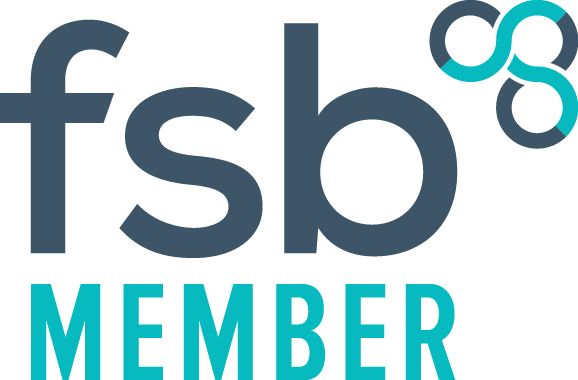In an era where digital transformation is reshaping industries, the role of cybersecurity has never been more critical. From small businesses to global enterprises, organisations are increasingly reliant on technology to drive innovation, efficiency, and growth.
However, this reliance comes with a significant risk: cyber threats. As these threats grow in frequency, sophistication, and impact, implementing a robust cyber control framework is no longer optional—it’s essential.
It provides a structured approach to managing cybersecurity risks, ensuring compliance and fostering resilience in the face of evolving challenges. Here’s why a robust cyber control framework is a business imperative and how it can safeguard your organisation in today’s interconnected world.
A cyber control framework is a comprehensive set of policies, procedures, and tools designed to identify, manage, and mitigate cyber risks. It provides a standardised approach to implementing and maintaining security measures across an organisation.
Popular frameworks include:
• NIST Cybersecurity Framework (CSF): Focused on identifying, protecting, detecting, responding to, and recovering from cyber incidents.
• ISO/IEC 27001: A globally recognised standard for information security management systems (ISMS).
• CIS Controls: A prioritised set of best practices for securing IT systems and data.
A robust framework helps organisations establish baseline controls, measure the effectiveness of their security posture and ensure compliance with regulatory and industry standards.
Why is a Cyber Control Framework Important?
1. Managing and Mitigating Cyber Risks
The digital landscape is rife with risks, from ransomware and phishing to insider threats and data breaches. A cyber control framework provides a structured approach to identifying these risks, assessing their impact, and implementing appropriate controls to mitigate them. Without a framework, organisations may struggle to address vulnerabilities systematically, leaving critical gaps in their defences.
2. Ensuring Regulatory Compliance
Regulations like GDPR and others mandate stringent cybersecurity practices to protect sensitive data. A robust cyber control framework helps organisations align with these requirements, reducing the risk of non-compliance, which can result in hefty fines, legal penalties and reputational damage.
3. Enhancing Operational Resilience
Cyber incidents can disrupt operations, resulting in downtime, financial losses and customer dissatisfaction. A cyber control framework enhances resilience by ensuring that organisations are prepared to detect, respond to, and recover from incidents quickly. Resilience is not just about preventing attacks, but also about minimising their impact and restoring normal operations efficiently.
4. Building Stakeholder Trust
Customers, partners, and investors expect organisations to take cybersecurity seriously. Implementing a robust cyber control framework demonstrates your commitment to protecting sensitive information, fostering trust and confidence among stakeholders. In a competitive market, this trust can be a key differentiator.
5. Supporting Digital Transformation
As organisations adopt new technologies like cloud computing, IoT, and AI, their attack surface expands. A cyber control framework ensures that security is embedded into these digital initiatives, enabling innovation without compromising data protection.
A strong cyber control framework includes several essential components:
1. Risk Assessment and Management
Understanding the unique risks your organisation faces is the first step in building an effective framework. Regular risk assessments help identify vulnerabilities, prioritise threats and allocate resources effectively. This process should include both internal risks (e.g., employee behaviour) and external risks (e.g., supply chain vulnerabilities).
2. Access Control and Identity Management
Implementing strict access controls ensures that only authorised individuals can access sensitive data and systems. Techniques like multi-factor authentication (MFA), role-based access control (RBAC), and zero-trust architecture are critical for reducing the risk of unauthorised access.
3. Incident Response Planning
No organisation is immune to cyber incidents, making a well-defined incident response plan essential. This plan should outline the steps to detect, contain and remediate threats, as well as communicate with stakeholders during and after an incident.
4. Continuous Monitoring and Detection
Real-time monitoring is vital for identifying and responding to threats as they emerge. Advanced tools like Security Information and Event Management (SIEM) systems and Endpoint Detection and Response (EDR) solutions provide visibility into network activity and potential threats.
5. Data Protection and Encryption
Protecting sensitive data—whether at rest, in transit or in use—is a cornerstone of any cyber control framework. Encryption, data masking and secure backup solutions ensure that data remains secure even in the event of a breach.
6. Employee Training and Awareness
Humans are often the weakest link in cybersecurity. Regular training programs ensure that employees can recognise phishing attempts, follow security best practices and understand their role in maintaining a secure environment.
7. Regular Audits and Compliance Checks
Conducting regular audits ensures that your cyber control framework remains effective and aligned with evolving threats and regulations. This proactive approach helps identify gaps and make necessary adjustments before they can be exploited.
The Benefits of Implementing a Cyber Control Framework
1. Proactive Risk Management: Anticipate and mitigate threats before they become critical issues.
2. Cost Savings: Preventing cyber incidents is far less costly than dealing with their aftermath.
3. Streamlined Compliance: Simplify the process of meeting regulatory requirements.
4. Improved Decision-Making: Gain valuable insights into your security posture and areas for improvement.
5. Reputation Protection: Safeguard your brand’s image by demonstrating a strong commitment to cybersecurity.
1. Choose the Right Framework
Select a framework that aligns with your industry, regulatory environment, and organizational needs. For example, NIST CSF is widely used in the U.S., while ISO/IEC 27001 is popular internationally.
2. Engage Leadership and Build a Cybersecurity Culture
Securing leadership buy-in is essential for successful implementation. Leadership support ensures adequate resources and fosters a culture of cybersecurity awareness across the organisation.
3. Conduct a Gap Analysis
Assess your current cybersecurity posture against the chosen framework. Identify gaps, prioritise them based on risk and develop an implementation roadmap.
4. Automate Where Possible
Leverage automation tools to streamline tasks like monitoring, patch management and incident response. Automation reduces human error and enhances efficiency.
5. Continuously Evolve
Cyber threats are constantly changing, so your framework must evolve to stay effective. Regularly update policies, tools, and processes to address new vulnerabilities and technologies.
In today’s digital age, cybersecurity is not just an IT issue—it’s a business imperative. Implementing a robust cyber control framework provides a structured approach to managing cyber risks, ensuring compliance, and fostering resilience.
It empowers organisations to protect their assets, maintain stakeholder trust and seize opportunities in a rapidly evolving technological landscape.
A strong cyber control framework is not just about safeguarding today’s operations—it’s about securing your organisation’s future in an increasingly uncertain world.
Whether you’re a startup or an enterprise, the time to act is now, so contact Green Catalyst today.


